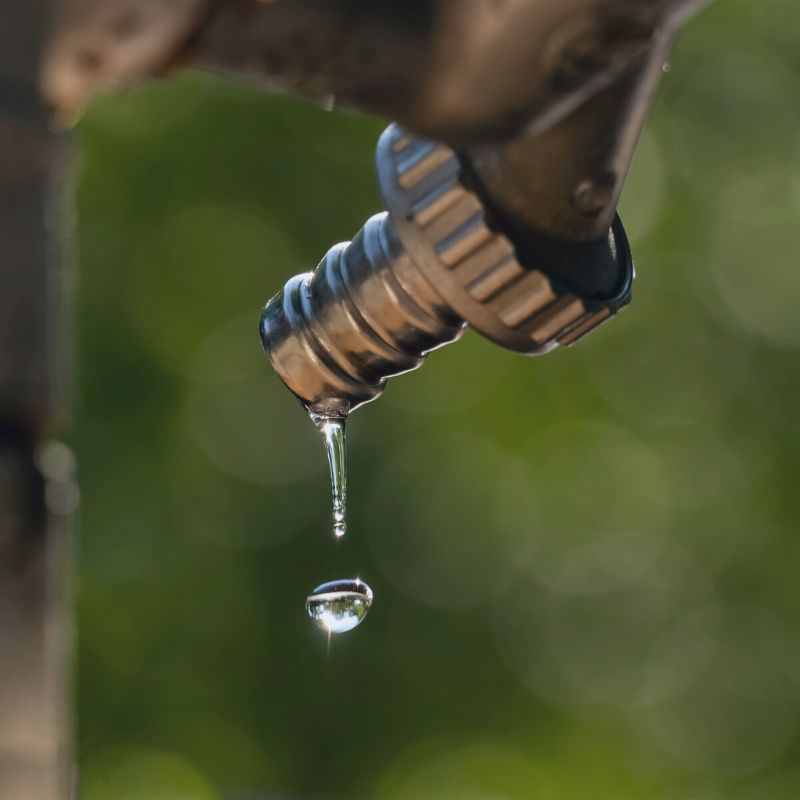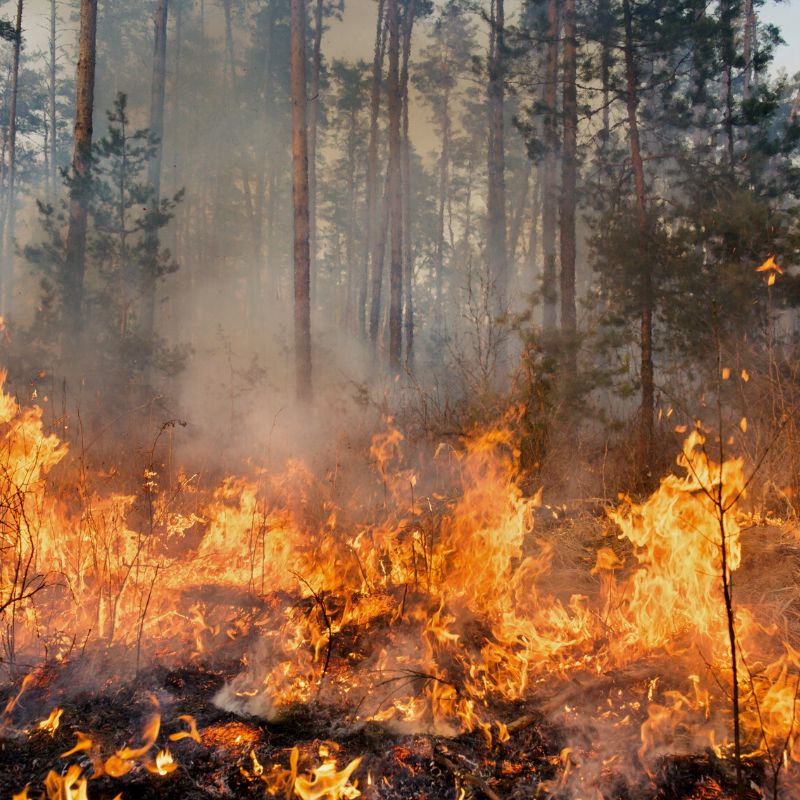affected by a severe episode of winter drought with more than 30 consecutive days without a drop of rain. The consequences are numerous but we can all act to limit them. Don’t wait any longer and find out everything you need to know about this exceptional meteorological phenomenon.
Winter drought Let’s start definition 💡
A winter drought is a long period without rain during the winter months. This severe drought has serious effects on everything around us. In particular, it leads to stagnation or a reduction in water reserves in the ecosystem. This can quickly create water resource shortages in the spring and summer.
1/ But what are the causes? 🧐
Remember, winter drought occurs when water supplies linked to precipitation are permanently below normal during the winter period. This year, we had to face 32 days without rain: a record since 1959! According to the monthly climate bulletins precipitation was on average less over almost the whole of last year compared to the normals recorded from 1991 to 2020*.
The earth is thirsty between the summer drought caused by high temperatures and the winter drought! Soil drying is more alarming than ever. Indeed, winter is the period when the water tables recharge to cope with extreme heat as calmly as possible. Without rain, they cannot fill up and so draw from wherever they can. Rivers are unfortunately the first to be affected.
Are you wondering about the link with global warming? You must suspect it, it is present. According to scientists, global warming caused by our greenhouse gas emissions favors these drought episodes. Did you know that France has warmed by more than 1.7°C since 1900? Yes, it is considerable! Episodes of extreme heat and drought are becoming longer and more intense, further warming the world in which we live.
2/ What are the consequences of winter drought? 📉
The lack of rainwater represents a real threat and tends to lead to many serious problems:
🚰 Reduction of water resources 
As we have explained, winter drought causes a sharp decrease in water levels in reservoirs. Lakes, rivers, and especially groundwater tables are weakened. This can quickly affect drinking water supplies, agricultural irrigation, and hydropower production.
Increased risk of natural disasters
Drought conditions greatly increase the risk of wildfires and flooding. Natural disasters are quickly very devastating and completely unmanageable. Floods can occur when Mother Nature decides to dump a lot of rain on us in a very short period. The soil being completely dry cannot absorb all the water received. It takes time before it penetrates dry soil. This can then quickly create flooding near water points, ravaging entire towns. The south of France is already particularly affected by this type of phenomenon. If the drought situation does not improve, the damage will only become more dramatic.
A drop in agricultural production
Drought can also affect the proper growth of crops and agricultural production. Indeed, the quantity of water available for irrigation is limited and we know that all production greatly needs it to develop. Agriculture is also the activity that consumes the most water ( 45% of the total ). It is mainly used to feed livestock and irrigate crops. Yes, but what to do when water is limited? Farmers then have to face significant economic losses and the price for end consumers rises considerably.
Damage to ecosystems
Nature is immediately affected by winter drought. Fish and animals dependent on the watercourse can no longer drink properly. They then find themselves forced to migrate to places less affected by drought, thus changing the entire ecosystem. Others can no longer eat as they should and disrupt all food chains. Plants can quickly die if they do not receive enough water. Biodiversity is more than ever in danger. It’s up to us to pay attention to them so as not to see them disappear.
3/ How to deal with it? 💪
We cannot control nature but we can all act in our way to limit its consequences. Learning to live differently is more than necessary!
The use of water
Why not take the opportunity to rethink your uses of water? You can favor quick showers rather than baths and avoid washing your car too often, for example. Every little bit counts and it’s not difficult to use less water every day.
The question of the reuse of wastewater is in the middle of debates. It remains a very difficult method to implement on a large scale. Israel is a country completely independent in wastewater reuse. Why not do like them? Our country works every day on the subject! But the idea of being completely independent in wastewater is not for tomorrow… It is a very long project which requires years of research and tests with very high energy costs. However, French President Emmanuel Macron has said he wants to increase the reuse of wastewater to 10% in France by 2030 *. The stakes may seem minimal but would save a large amount of drinking water.
In your garden, there are simple solutions to reuse wastewater or collect rainwater (when it rains!).
Collect rainwater – You can install a rainwater collection system to easily collect water that falls from the roof of your house. This water can be stored in a tank and irrigated on your exterior. To do this, you can install gutters and downspouts to direct the water towards the collector. More simply, waterproof barrels can do the same thing.
Recover gray water – Less obvious, but it is possible to reuse wastewater from your domestic activities such as showering, sinking, drying, etc. This water is not intended for human consumption and should not be used to water your vegetable garden. For your flowers, trees, and shrubs, gray water recovery is ideal! Installing this system can be a little expensive but makes a difference in your water bill over time.
Vegetation
Did you know that the main regulator of the water cycle on the planet is plants? This is exactly what we are going to explain to you. Indeed, even if an anticyclone repels disturbances, we do not lack humidity in the air. The problem is that this humidity is not currently transmitted to the ground.
Plants continually produce a form of “ transpiration .” This means that the water contained in the leaves, stems and flowers evaporates naturally. This is their method of circulating the sap they contain. The larger the plants, the greater the quantity of water released. It even represents on average the equivalent of their weight in water per transpiration.
But what happens to all this water? After running down the plant to hydrate it, it is shared into the soil and to surrounding plants. When there is too much moisture, it will sink deep to nourish the soil. The rain will be ready to be welcomed, a bit like when a sponge absorbs water for example!
Unfortunately, this naturally effective method for hydrating the soil and groundwater is not enough to overcome winter drought. Cities are taking an increasingly important place in France, limiting the development of nature. Having a garden and maintaining it is a real necessity! Planting urban and peri-urban areas would naturally regulate soil humidity. Each of us is capable of making a plant-based gesture! We will limit the effects and consequences of drought episodes, together.
Now you know how dangerous and alarming winter drought is. The garden is affected and weakened by these significant weather phenomena. It is essential to keep an eye on the condition of your soil to help it while reducing its consumption of drinking water. Indeed, following winter drought, rainwater helps nourish the garden’s plants for spring but does not penetrate the soil. The water tables need you!
Do you want to continue to act for the planet? We have some ideas to share with you! What if you reduced your waste while taking care of your garden? We give you our tips for a more reasoned garden and a lighter mind.










